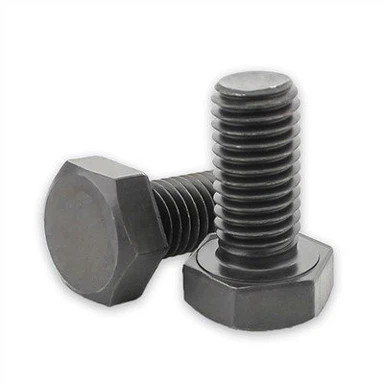Super Detailed Knowledge Map Of Screws, Pure Dry Goods
Dec 21, 2022
Terminology Relating to Screws
1. Differences among screws, nuts, nuts, bolts, screws and studs: there are no screws and nuts according to the standard. Screws are commonly known, and those with external threads can be called "screws". The shape of the nut is usually hexagonal, and the inner hole is internal thread, which is used to fit with the bolt and tighten the related parts. The nut is commonly known, and the standard should be called "nut".
The head of the bolt is generally hexagonal, and the rod is provided with external thread. The screw is small, with flat head, cross head, etc. on the head, and external thread on the rod. The stud should actually be called "double headed stud". Both ends have external threads, and the middle is usually a smooth rod. The long end of the thread is used to connect with the deep hole, and the short end is connected with the nut.
2. Common English expression: Screw/Bolt/Fastener (bolt) (fastener)
3. Definition of thread: the thread is a shape with uniform spiral bulge on the external or internal surface of the solid.
Screw action
1. Fastening and connection function: applicable to most screw products at this stage.
2. Driving action (displacement action): such as micrometer used by QC to check dimensions.
3. Sealing function: such as the connection and sealing of pipes.
The history of thread development
Machine thread: during assembly, drill and tap the thread on the assembly first. The specification of the tapped internal thread is consistent with that of the external thread of the screw. Use a small torque for assembly.
Self tapping thread: during assembly, drill holes on the assembly first, without tapping the internal thread, and use a large torque for assembly.
Self drilling thread: it is directly used on the assembly, and the screw drilling and tapping are formed at one time.
Screw processing method
1. Turning
Make the material reach the expected shape by removing the material
Advantages: high processing precision, no mold limitation
Insufficient: high production cost and slow processing speed
2. Forging
Extrude the material by external force to deform it to achieve the desired shape
Advantages: fast production speed, low cost, suitable for mass production
Inadequate: The forming is limited by the mold, and the mold cost of complex products is high
3. Cold heading
It refers to the process of extruding and deforming the metal wire rod with the help of an external force by using a die under the condition that the metal wire rod is not heated. The cold heading process is just one of the forging processes.
Introduction to basic screw configuration
To understand screws and bolts, you must first know their types, characteristics and functions:
A: Drive system
B: Head
C: Teeth joint
D: Import and attack unit
Mechanical screw
Self-taping Screws
Self-Tapping Screw-Thread Rolling
Screw head type
Screw thread type
Screw process flow
The general flow chart is as follows:
Inventory process
It refers to the original wire rods purchased by the raw material manufacturer. A disk element mainly includes the following parameters: A, brand B, product name C, specification D, material E, heat number or batch number F, quantity or weight. The main chemical components of carbon steel plate element are: C, Mn, P, S, Si, Cu, Al. The lower the content of Cu, Al, the better.

Wire drawing process
In order to achieve the wire diameter we need (such as to 3.5mm draw wire).

Cold heading (heading) process
Through the interaction between the dies, it can be shaped. First, cut off the wire rod, and then upset it into a screw blank to form the head, cross groove (or other head type) thread blank diameter, rod length, and lower fillet of the head.

Note: It can be designed according to customer requirements. Common head types are P head, B head, F head, T head, etc. Common groove types include cross groove, slot, plum groove, hexagonal socket groove, etc.

Tooth rubbing process
The cold upset blank is rolled out of the thread, and the tooth pattern is formed through the interaction between the movable tooth plate and the fixed tooth plate.

Changes before and after rubbing teeth

Tooth rubbing machine

Tooth rubbing plate (template)

Heat treatment procedure
1. Purpose: To make the screws obtain higher hardness and strength after cold heading.
2. Function: realize the self tapping locking of metal, and improve the mechanical properties of metal parts, such as torsion resistance, tension resistance and wear resistance. 3. Classification: A Annealing: (700 ℃ x 4hr): elongated structure - regular polygonization.

Cold working organization form B. Carburizing heat treatment (add carbon element to metal parts to improve their surface hardness, for metal materials with low carbon content).

C. Quenching and tempering heat treatment (do not add elements to the metal, and change the internal structure of the metal with the change of temperature to obtain better mechanical properties).

Electroplating process
The product surface after electroplating can present the required color effect and surface oxidation resistant coating effect.


-End-
















